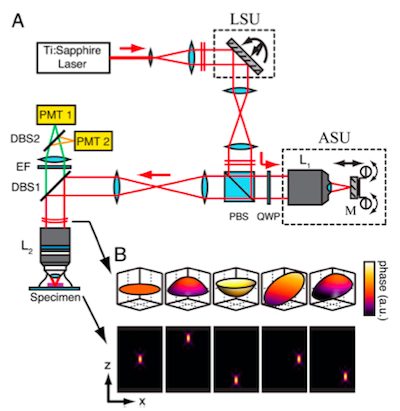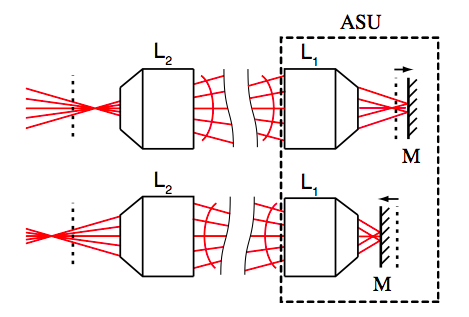Fast z-galvo for 3D two-photon imaging

Perhaps you’re familiar with the various AOD and piezo-based methods for two-photon imaging in 3D quickly. Here’s another way (Botcherby et al. 2012, PNAS, open access)
The used all galvos, rather than AODs or piezo z-steppers, as used in other implementations (e.g. 1, 2, 3, 4). That is, stock Cambridge Technology mirrors for x and y, and their custom galvo system for z.
The “aberration-free” part of the title is perhaps a bit misleading. They aren’t correcting for aberrations with a deformable mirror. What they’re referring to is that they do the z-scanning in a clever way to decrease the aberrations that would occur if they simply diverged and converged the beam. (figure below)

They used a second objective L1, which was matched for magnification but not necessarily NA, and air immersion rather than water immersion like the main objective, L2. The scan beam was projected through this objective onto the z-galvo mirror.
This approach is much simpler, from the engineering side, than multiple AODs. It’s also easier to get wide fields of view than with AODs, and there are little to no dispersion issues (again, unlike AODs). Although it is slower than AOD-based scanning, it should be faster than piezo z objective movers.
Thanks for bringing this nice work to our attention.
I have the feeling that it requires substantial modification of any normal 2P microscope?
Keep up the great work on your weblog, it is terrifically informative.